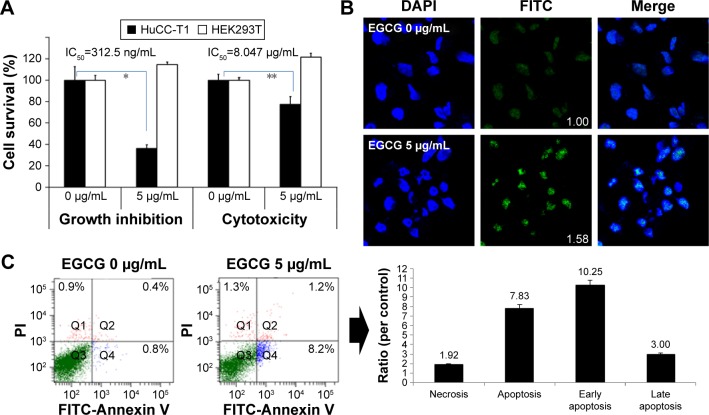Figure 1.
The anticancer activities of EGCG against HuCC-T1 cells.
Notes: (A) The effects of EGCG on the viability of cancer cells. A total of 3×104 cells were used to measure the anticancer effect and 3×103 cells were used to test growth inhibition. RPMI1640 media supplemented with 10% FBS was used to assess tumor cell growth inhibition and serum-free media was used to assess the anti-cancer effects. (B) TUNEL staining. Images were observed at 400×. (Numbers in the boxes indicate intensities of FITC.) (C) Flow cytometric analysis of cancer cells. FITC Annexin V and PI were used for apoptosis and necrosis analysis of tumor cells, respectively. *,**P<0.01.
Abbreviations: IC50, half maximal inhibitory concentration; RPMI1640, Roswell Park Memorial Institute 1640; EGCG, epigallocatechin-3-gallate; FBS, fetal bovine serum; FITC, fluorescein isothiocyanate; HuCC-T1, human cholangiocellular carcinoma cell line; HEK 293T, human embryonic kidney 293 T; PI, propidium iodide; TUNEL, terminal deoxynucleotidyl transferase dUTP nick end labeling.

